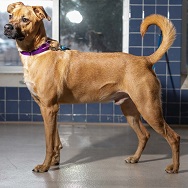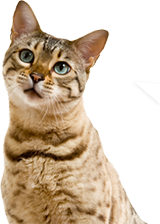The Trade Game

When your dog has a high-value item (like a special treat, favorite toy, or chew), it’s important to help them feel relaxed and comfortable if they’re approached. Taking items away from your dog can cause stress, anxiety, and expressions of aggression. This is why teaching them to “trade” rather than “stealing” from them is so valuable. Thankfully, there is a process we call “the trade game” which will help you both feel more at ease. This game can be played with toys and household items that your dog often picks up. Items that are unsafe for your dog or easily damaged should be kept out of reach while you are developing these skills. Keep in mind that this is not a game to play during mealtimes – you should always allow your dog to eat their meal without interference from humans or other animals.
Safety First!
This is a process that teaches dogs to relinquish items and remain calm and relaxed as you approach. These steps are meant to be a preventative measure against resource guarding. If your dog becomes stiff, growls, or otherwise shows a high level of discomfort, immediately stop what you are doing and seek out a professional for additional support.
Warm up:
Before you begin your training procedure, we’ll start by teaching your dog that good things happen when you approach, even when they don’t have a resource. Discreetly place a few treats in your pocket; whenever your dog is laying down, drop a treat next to them and walk away. Continue to do this periodically and routinely throughout the day. Do not pet them or attempt to otherwise interact with them, simply drop the treat and leave. This will establish an important pattern for your dog before you add in the pressure of a resource being a part of the picture.
Step one:
The first step is to teach your dog that good things happen when you are in the room while they have possession of an object. Cut up teeny tiny pieces of a high value treat, like cheese or hot dogs, then either set out one of your dog’s favorite toys (or other valued item) or wait until they pick an item up on their own. Once they have started chewing on or playing with the item, toss a few tiny pieces of treat (one after another) toward your dog from several feet away. Do not approach them or attempt to otherwise interact with them. If they readily eat the pieces of food that you toss, you can progress to step two.
If your dog sees but does not eat the tossed treat when they are in possession of an item, stop there and consider your next step. If they won’t give up the item to eat the treat you tossed from a distance, the item they have is too valuable to the dog and you should not move on to step two (nor should you attempt to take that item away from them). Instead, try tossing them a higher value treat until they do drop the item to go get the treat.
Step two:
Now that you know your dog is comfortable eating treats you’ve tossed to them from a distance, you can work on approaching them. Approach your dog while watching their body language, drop a few treats on the ground next to the item (do NOT attempt to touch your dog or the item), and continue walking past them. Observe what your dog does next. Do they readily eat the treats? Or even get up and follow you to ask for more? Great! You’re ready for the next step.
Step three:
Approach your dog and once again drop a few treats. Do they happily eat the treats that you’ve dropped? If so, toss more treats a few feet away from them. Do NOT attempt to pick up the toy at this time. Observe what happens next. Do they rush out to the treats, gobble them up, and come flying back to the toy? If they do, continue to practice steps 1-3 until they become more relaxed, eat the treats at a slower pace, and casually walk back to their item (if they return to it at all) rather than rushing back to it. Once they are visibly relaxed with this progression, you can move on to step four.
Step four:
Go back through steps one through three and confirm that your dog is still relaxed and comfortable with the protocol thus far. If they are, you can now toss your treats a few feet away and -- while your dog is eating the treats – you can pick up the toy. When they return to you, give them the toy. We want to teach them that it’s ok for us to pick up their toy, and it doesn’t strictly mean they’re losing access to an object they strongly desire. That way, the small percentage of time that you do need to take and keep an item from your dog, it is relatively inconsequential.
Step five:
At this point, your dog should be readily trading items for treats. You can now add a verbal cue onto the behavior. Popular examples include “drop it” or “out,” but you can use any word or phrase. Say your verbal cue, toss your treats for your dog, then pick up the item. Eventually, the verbal cue will predict food for your dog and they will immediately spit the item out.
Remember, your dog has no concept of what is and what is not appropriate to pick up. If they pick up an item that they should not have, play the trade game and praise them highly for the good choice of trading with you! After you take the inappropriate item, remember to always offer them something that they can have so they learn which items are ok to play with.
